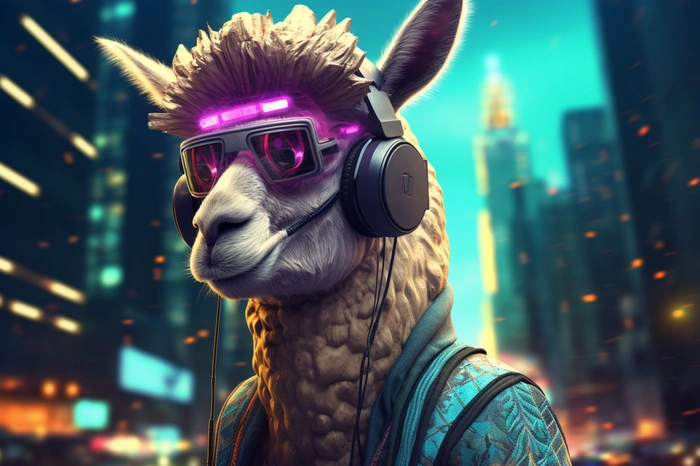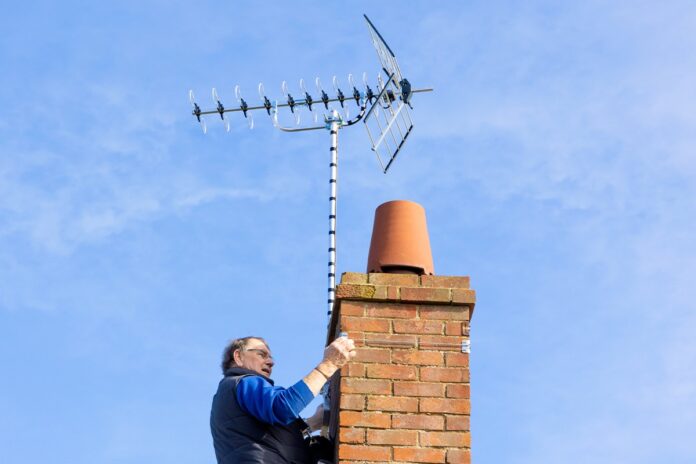In the ever-evolving world of artificial intelligence, a new development has emerged that promises to supercharge the Llama 2 model, enhancing its capabilities with vision and hearing. This breakthrough is brought to life in a video created by AI expert, Jason, who guides viewers through the process of utilizing multimodal language models such as LLaVA. This innovative tool enables users to reach the impressive GPT-4 level multimodal abilities, unlocking exciting use cases like chatting with images and more.
Large language models like OpenAI’s GPT-4 and Google’s Palm 2 have been making waves in the AI industry with their ability to integrate visual inputs and text to perform multimodal tasks. These models are not limited to text inputs; they can process images, videos, audio, or any type of data, creating joint embeddings to understand the relationship between different data types.
The power of these models lies in their ability to solve problems and run reasonings across different types of data. For instance, they can generate a recipe based on an image of food items or find an image with specific elements based on an audio input. OpenAI has even showcased a feature where it can transform a wireframe sketch into a functional HTML website.
How to supercharge Llama 2 with vision and hearing
Enter LAVA (Large Language and Vision Assistant), a multimodal model that can perform tasks across both image and text. Unlike other models, LAVA can understand and reason about images, not just detect objects. It can generate stories based on complex images and identify people in photos.
“LLaVA represents a novel end-to-end trained large multimodal model that combines a vision encoder and Vicuna for general-purpose visual and language understanding, achieving impressive chat capabilities mimicking spirits of the multimodal GPT-4 and setting a new state-of-the-art accuracy on Science QA.”
Other articles and tutorials you may find of interest on the subject of Llama 2 :
The real-world applications for these models are vast and varied. They include turning sketches into websites, breaking down app designs into detailed product requirements, content curation and classification, medical and health diagnosis, and potentially even cracking CAPTCHA verifications.
Google has taken this technology a step further by integrating a multimodal model with a robot, enabling it to complete complex tasks based on both visual and text inputs. This integration showcases the potential of these models in the realm of robotics and automation.
For those eager to harness the power of LAVA, the good news is that it is available for use now. It can be installed on a local machine or used via a demo website, making it accessible for a wide range of users.
What are Multimodal models?
In the context of AI multimodal models refer to models that can understand and generate content across multiple modes or types of data. In simpler terms, while a unimodal model might only handle text or only handle images, a multimodal model can handle text, images, sound, and potentially other types of data simultaneously.
The concept behind multimodal models is to capture and leverage the rich information present in different types of data to provide more comprehensive and accurate insights or outputs. Here’s a breakdown of the main features and advantages of multimodal models:
Multiple Data Types
Multimodal models have architectures that are designed to ingest and process various forms of data. This is a shift from traditional models which typically handle one form of data, such as text in the case of language models or images in the case of convolutional neural networks.
Applications:
- Healthcare: Combining patient records (text) with medical images (like X-rays) for better diagnosis.
- Autonomous Vehicles: Processing sensory data (like LIDAR), video feeds, and textual information (like maps or street signs) for safe navigation.
Improved Contextual Understanding
Data from different modalities can offer complementary insights. When processed together, these insights can provide a richer contextual understanding than any single modality could provide on its own.
Applications:
- Sentiment Analysis on Videos: Analyzing both audio (for spoken content) and visual cues (like facial expressions) to gauge sentiment more accurately.
- Virtual Reality: Combining visual scenes with audio cues to create more immersive experiences.
Cross-Modal Translations
Cross-modal translation refers to converting information from one modality to another. With the advent of deep learning, models can now generate content in one modality based on inputs from another.
Applications:
- Image Captioning: Providing a textual description of images.
- Text-to-Speech: Converting written text into spoken words.
- Sketch-to-Design: Generating detailed design prototypes from rough sketches.
Robustness
When one form of data is insufficient or ambiguous, multimodal models can rely on other forms to enhance clarity. This redundancy can be particularly useful in challenging environments or scenarios.
Applications:
- Noise Reduction in Calls: Using visual data (like lip movements) to enhance audio clarity in noisy environments.
- Security Systems: Combining facial recognition (visual) with voice recognition (audio) for more robust identity verification.
Comprehensive Learning
Humans inherently rely on multiple senses to comprehend their surroundings. Similarly, multimodal models can combine various data types to derive a fuller understanding of a situation or context.
Applications:
- Education and E-learning: Creating platforms that adapt content based on textual, visual, and auditory feedback from students.
- Interactive Robotics: Robots that can understand commands through text, gesture, and voice for more natural human-robot interactions.
Recent advancements in AI, such as OpenAI’s CLIP and DALL·E, are examples of approaches towards building powerful multimodal models. CLIP, for instance, can understand images in the context of natural language, allowing it to perform tasks like zero-shot image classification. DALL·E, on the other hand, can generate images from textual descriptions.
In essence, multimodal models are shaping the next frontier of AI by providing a more holistic and integrated approach to data analysis and content generation. By harnessing the strengths of different data types, these models can offer solutions that are more versatile, accurate, and contextually aware.
The development and deployment of multimodal models are seen as the next frontier in AI research, promising richer interactions and more versatile applications. The future of AI looks bright with the advent of multimodal models like LAVA. By supercharging the Llama 2 model with vision and hearing, users can unlock a whole new world of possibilities, pushing the boundaries of what AI can achieve.
Filed Under: Guides, Top News
Latest Aboutworldnews Deals
Disclosure: Some of our articles include affiliate links. If you buy something through one of these links, Aboutworldnews may earn an affiliate commission. Learn about our Disclosure Policy.






